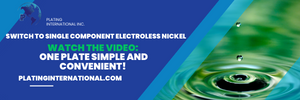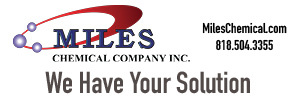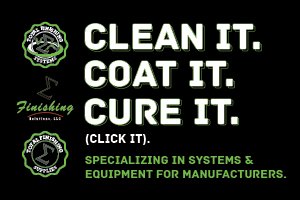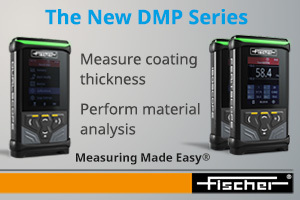Plumajet is introducing a novel spray coating technology that relies solely on the electric field to achieve precise, uniform coatings in two- and three-dimensional applications.
This technique offers a unique solution for industries requiring controlled material deposition on complex geometries or small-scale features.
Unlike traditional coating methods, Plumajet relies solely on the electric field to guide micro-sized material particles to their target. 3D applications allow a single stationary sprayer to fully wrap small and intricate structures, such as heat sink fins, with a uniform coating. This method offers an alternative for applications requiring greater precision than dip coating while avoiding the complexity and expense of vacuum-based deposition methods.
 At left, gold on glass interdigitated electrode – we sprayed the blue material with no mask whatsoever – it only goes onto the grounded conductive regions and specifically targets 50 μm features. The larger pad is totally untouched because it was not grounded during spray. At right, complex 3D objects like this metal 3D printed lattice are highly compatible with SLED – we applied the red material using a single sprayer.
At left, gold on glass interdigitated electrode – we sprayed the blue material with no mask whatsoever – it only goes onto the grounded conductive regions and specifically targets 50 μm features. The larger pad is totally untouched because it was not grounded during spray. At right, complex 3D objects like this metal 3D printed lattice are highly compatible with SLED – we applied the red material using a single sprayer.
In 2D applications, the technology enables controlled layer thickness and precise deposition on conductive features surrounded by insulating materials. Such applications include electrode coatings, copper trace protection, and the repair of defects or scratches in thick films. Film porosity can also be controlled, allowing for dense, protective films or high-surface-area functional materials.
Materials are sprayed from liquid-phase solutions or dispersions, which dry before reaching the target surface. This approach effectively deposits polymers, particulate materials, and even bioactive substances. Compatible substrates include conductive materials such as metals and hydrophilic surfaces (like nylon or even plants), while non-conductive materials such as PET are not suitable. The resulting films range from 0.5 μm to 50 μm in thickness, and the film structures can be highly tailored.
Visit www.plumajet.co.































